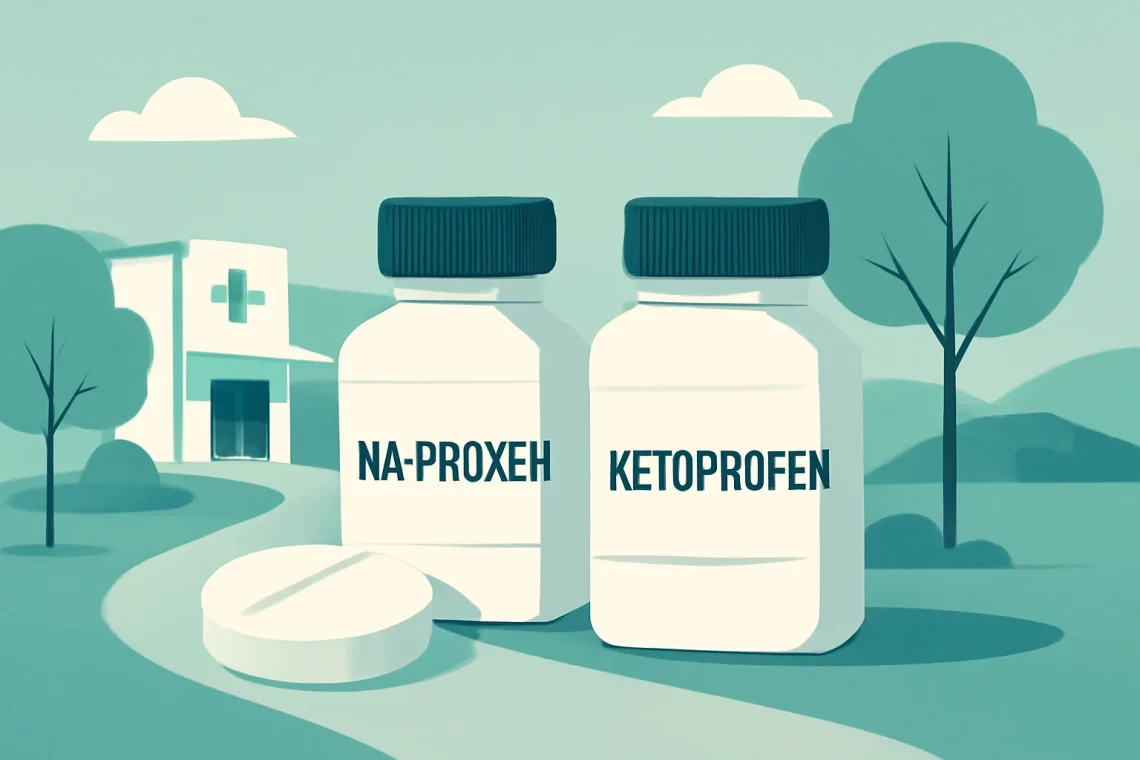-
Ibuprofen vs Advil: Understanding the Differences and Uses
Ibuprofen and Advil are two terms often encountered in discussions surrounding pain relief and inflammation management. Both are widely used in households and medical settings alike, yet many people may not fully understand the differences and similarities between them. In essence, ibuprofen is the generic name for a common nonsteroidal anti-inflammatory drug (NSAID), while Advil is a popular brand name under which ibuprofen is sold. This distinction raises questions about the efficacy, usage, potential side effects, and overall safety of these medications. As individuals seek effective solutions for pain, fever, and inflammation, it’s crucial to navigate the pharmaceutical landscape carefully. The choice between ibuprofen and Advil may seem trivial; however,…
-
Meloxicam vs Indomethacin: Which Anti-Inflammatory is Better?
Meloxicam and indomethacin are both nonsteroidal anti-inflammatory drugs (NSAIDs) commonly used to relieve pain, reduce inflammation, and enhance mobility in individuals suffering from various conditions such as arthritis, osteoarthritis, and other musculoskeletal disorders. They belong to a class of medications known for their effectiveness in treating pain and inflammation by inhibiting specific enzymes that contribute to the production of inflammatory substances in the body. While both medications are effective in managing symptoms, they possess distinct characteristics, mechanisms of action, and potential side effects that can influence a healthcare provider’s choice in prescribing them. Understanding the differences and similarities between meloxicam and indomethacin is crucial for patients and healthcare professionals alike.…
-
Tramadol vs Hydrocodone: Key Differences and Similarities Explained
The use of prescription medications for pain management has become increasingly common in recent years. Among these medications, Tramadol and Hydrocodone are two widely prescribed options that serve as effective analgesics. Both drugs belong to the class of opioids, but they have different mechanisms of action, side effects, and potential for addiction. As pain management continues to evolve, understanding the differences and similarities between these two medications is crucial for patients, healthcare providers, and caregivers. Tramadol is a synthetic opioid that works by binding to the brain’s pain receptors, while also inhibiting the reuptake of neurotransmitters like serotonin and norepinephrine. This dual mechanism allows Tramadol to provide relief from moderate…
-
Cyclobenzaprine vs Zanaflex: Understanding Their Differences and Uses
Cyclobenzaprine and Zanaflex are two medications commonly prescribed for muscle relaxation and pain relief. As muscle relaxants, they serve to alleviate discomfort associated with muscle spasms and musculoskeletal conditions. While both medications share a similar purpose, their mechanisms of action, side effects, and use cases can differ significantly. Understanding these differences is crucial for both patients and healthcare providers to make informed decisions regarding treatment options. In a landscape where pain management is paramount, the choice between Cyclobenzaprine and Zanaflex can be pivotal in achieving effective relief and improving patients’ quality of life. This article delves into the nuances of these two medications, exploring their distinct characteristics, benefits, and potential…
-
Naproxen vs Ketoprofen: Comparing Pain Relief Options for Your Needs
Naproxen and ketoprofen are both nonsteroidal anti-inflammatory drugs (NSAIDs) that are commonly used to relieve pain and reduce inflammation. These medications are widely prescribed and can be found over-the-counter, making them accessible to a large population seeking relief from various conditions. Despite their similarities, naproxen and ketoprofen have distinct characteristics that may make one more suitable than the other depending on the specific needs of the patient. Understanding the pharmacological differences, potential side effects, and appropriate usage of these medications is crucial for both healthcare providers and patients. Inflammation and pain can arise from numerous sources, including arthritis, muscle strains, and other musculoskeletal issues. In these instances, choosing the right…
-
Lyrica vs Gabapentin: Which Medication Is Right for You?
The discussion surrounding medications for neuropathic pain and seizures often leads to a comparison between Lyrica and Gabapentin. Both drugs are anticonvulsants and are widely prescribed for similar conditions, yet they differ in various aspects, including their chemical makeup, efficacy, side effects, and overall patient experience. Neuropathic pain, often characterized by a burning or shooting sensation, can arise from various underlying conditions, such as diabetes, shingles, or nerve injuries. These sensations can severely impact the quality of life, prompting healthcare professionals to seek effective treatments. Lyrica, known generically as pregabalin, and Gabapentin, often referred to by its brand name Neurontin, are two popular choices in the realm of pain management.…
-
Ibuprofen vs Motrin: Understanding Their Differences and Uses
Ibuprofen and Motrin are two widely recognized names in the realm of pain relief and anti-inflammatory medications. Both are often used to alleviate discomfort associated with various conditions, including headaches, muscle aches, arthritis, and even menstrual cramps. Their popularity stems from their effectiveness and the ease of accessibility in pharmacies and over-the-counter settings. Despite their common usage, many people may be unaware of the subtle distinctions between ibuprofen and Motrin. While they are often thought to be interchangeable, understanding their differences and similarities can be crucial for choosing the right medication for specific needs. The active ingredient in both ibuprofen and Motrin is the same, but the branding, formulations, and…
-
Fentanyl vs Morphine: Understanding the Differences and Uses
Fentanyl and morphine are two potent medications commonly used in the management of pain. Their effectiveness, however, is accompanied by significant differences in their properties, effects, and potential risks. As healthcare professionals and patients navigate the complex landscape of pain management, understanding these differences is crucial. Fentanyl, a synthetic opioid, is known for its rapid onset and high potency, making it a powerful tool in acute pain scenarios, particularly in surgical settings and for patients with severe chronic pain. Morphine, on the other hand, is a naturally occurring opioid that has been used for centuries to relieve pain. Its well-established efficacy and safety profile make it a go-to choice for…
-
Cyclobenzaprine vs Robaxin: Key Differences and Uses Explained
Cyclobenzaprine and Robaxin are two commonly prescribed muscle relaxants that are used to alleviate muscle spasms and discomfort caused by musculoskeletal conditions. As patients seek effective relief from pain and tension, understanding the differences between these medications becomes crucial. Both drugs belong to different classes of muscle relaxants and have unique mechanisms of action, side effects, and potential interactions. Cyclobenzaprine is often utilized for short-term treatment of muscle spasms, providing quick relief for patients who are recovering from injuries or dealing with acute pain. Its sedative properties can be beneficial in promoting rest, but they also raise considerations regarding daytime drowsiness and impairment. On the other hand, Robaxin, or methocarbamol,…
-
Naproxen vs Aleve: Understanding Their Uses and Differences
Naproxen and Aleve are two commonly used medications that belong to a class of drugs known as nonsteroidal anti-inflammatory drugs (NSAIDs). These medications are widely utilized for their analgesic and anti-inflammatory properties, making them effective for treating various conditions such as arthritis, muscle pain, menstrual cramps, and other types of pain. The popularity of both Naproxen and Aleve can be attributed to their efficacy in providing relief from discomfort while also reducing inflammation. Understanding the differences and similarities between Naproxen and Aleve can be crucial for individuals seeking the most suitable option for their pain management needs. While both medications offer similar benefits, they also have unique characteristics that may…







































